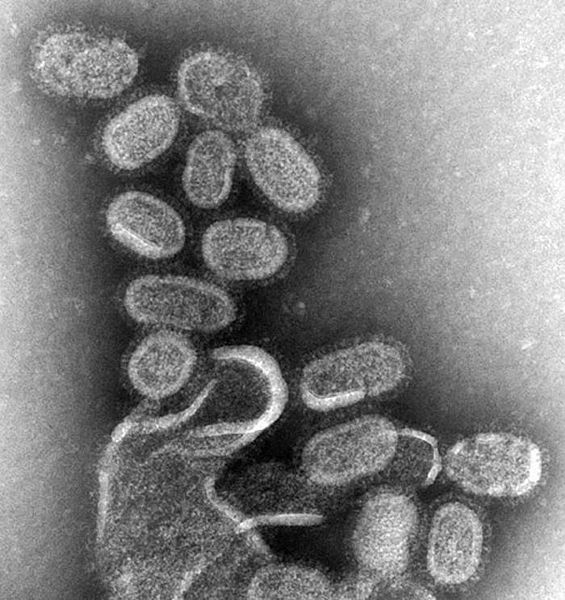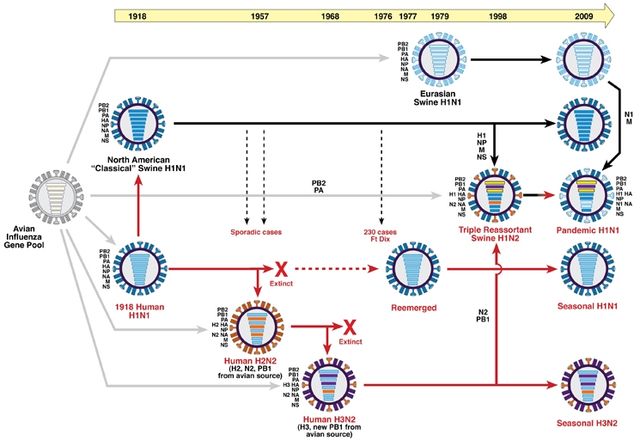Avian influenza, also known as avian flu or bird flu, is a disease caused by the influenza A virus, which can infect both birds and people. It is similar to other types of animal flu in that it is caused by a virus strain that has adapted to a specific host. The type with the greatest risk is highly pathogenic avian influenza (HPAI).
Birds that have been put down because of avian influenza. The virus is spread by contact between healthy and unhealthy birds.
Yarding poultry farm in Vernon County, Wisconsin. Allows the chickens to roam outside in a fenced in yard.
The interior of a barn showing infected birds who have been killed by foam depopulation (suffocation with foam)
Influenza A virus (IAV) is a pathogen that causes the flu in birds and some mammals, including humans. It is an RNA virus whose subtypes have been isolated from wild birds. Occasionally, it is transmitted from wild to domestic birds, and this may cause severe disease, outbreaks, or human influenza pandemics.
Influenza A virus
A transmission electron micrograph (TEM) of the reconstructed 1918 pandemic influenza virus. The bottom structure represents membrane debris from the cells used to amplify the virus. Pictured are the 'elliptical' particles representing the smallest particles produced by influenza virus. Purification techniques often deform the particles without proper fixation protocols, leading to 'spherical' appearance. Filamentous or intermediate sized particles simply extend along the long axis on the opposite side of the genome segments.
Genetic evolution of human and swine influenza viruses, 1918–2009






